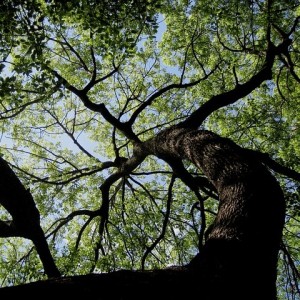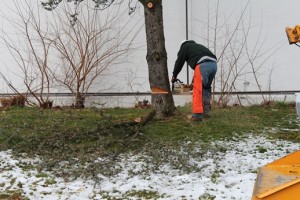 As a professional tree service, we get a lot of questions about trees. One of the most common questions is, “Is my tree going to die?”. As our Certified Arborists inspect trees they look for a number of symptoms, signs, and conditions. Some of these point to different levels of concerns for a tree and direct them to specific recommendations. This evaluation of a tree requires a visit to see the tree up close, but here are a few categories of tree health that may cue you in on just how concerned you should be about your tree.
As a professional tree service, we get a lot of questions about trees. One of the most common questions is, “Is my tree going to die?”. As our Certified Arborists inspect trees they look for a number of symptoms, signs, and conditions. Some of these point to different levels of concerns for a tree and direct them to specific recommendations. This evaluation of a tree requires a visit to see the tree up close, but here are a few categories of tree health that may cue you in on just how concerned you should be about your tree.
Mild Concerns: Don’t take these lightly as they can progress to moderate or critical concerns.
- Slight discoloration of foliage
- Slight curling or cupping of foliage
- Appearance of strange substances from insect/mite/disease activity on leaves and twigs
- Small amount of webs and worms in foliage
Moderate Concerns: Don’t take these lightly as they can progress to critical concerns
- Significant discoloration of foliage
- Advanced curling, wilting, or cupping of foliage
- Premature fall color or leaf drop
- Abundance of strange substances from mite/insect/disease activity
- Smaller leaf size than typical
- Abundant holes/skeletonization on leaves from insect feeding
- Large amount of worms in deciduous trees and on bark
- Accelerated growth of foliage, stems, or fruit
- Extreme hot/cold stress or drought damage
- Excessive moisture for an extended period of time
- Repetitive years of stress factors
Critical Concerns: Some of these symptoms may be signs your tree needs to be removed
- Lack of foliar growth in the current season and it’s months past when growth should emerge
- Significant die-back of growth
- Evergreens that have lost a large portion of growth or is turning brown
- Fungal bodies on the trunk or roots
- Large cracks in trunk and main branches
- Sap exuding from many small holes in trunk or main branches
- Sunken/discolored areas in stems and branches
 It isn’t possible to list all the symptoms of tree stress nor to specify which of them will point your tree to each category. This requires an on-site consultation with a tree service that employs a Certified Arborist. These tree experts will identify your tree species, symptoms, and then diagnose tree problems. Some of these issues can be remedied with a Plant Health Care program to help nutritional, insect, mite, or disease problems. Some issues can also be improved by better cultural practices, tree pruning, etc.
It isn’t possible to list all the symptoms of tree stress nor to specify which of them will point your tree to each category. This requires an on-site consultation with a tree service that employs a Certified Arborist. These tree experts will identify your tree species, symptoms, and then diagnose tree problems. Some of these issues can be remedied with a Plant Health Care program to help nutritional, insect, mite, or disease problems. Some issues can also be improved by better cultural practices, tree pruning, etc.
 We’ve seen the prognosis go both ways. Sometimes property owners think their tree is ready to die and we can remedy issues over a number of years. However, sometimes problems are so advanced that the recommendation is for tree removal. Whatever the outcome, our full array of tree services can address many of the solutions for your tree’s problems and we will try, whenever possible, to save your tree. If you’d like a free consultation for your trees, please don’t hesitate to contact us.
We’ve seen the prognosis go both ways. Sometimes property owners think their tree is ready to die and we can remedy issues over a number of years. However, sometimes problems are so advanced that the recommendation is for tree removal. Whatever the outcome, our full array of tree services can address many of the solutions for your tree’s problems and we will try, whenever possible, to save your tree. If you’d like a free consultation for your trees, please don’t hesitate to contact us.


No comments:
Post a Comment